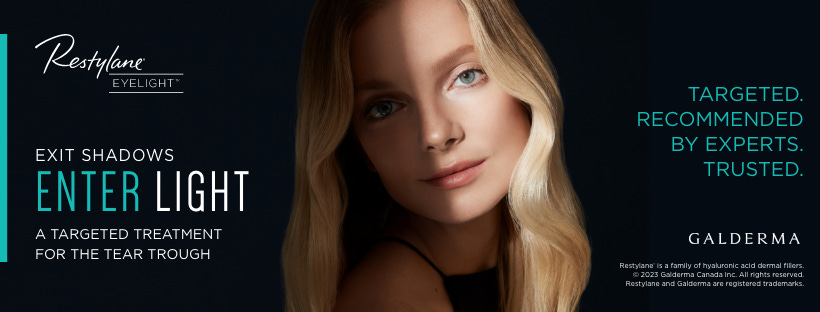Needs of women of childbearing age with psoriasis
Today’s report also covers research into trichloroacetic acid peels for melasma, and hair loss and quality of life in Muslim American women, and more (1,560 words, 7.5 minutes)
The Women in Dermatology e-newsletter is supported without restriction by Galderma Canada.
Good morning, and welcome to the Women in Dermatology e-newsletter from Chronicle Companies. We’re pleased to have you join us. This biweekly bulletin will update you on new findings regarding dermatologic issues that affect women and the dermatologists who treat them. We welcome your feedback and opinions, so let us know if you have any comments, observations, or suggestions. You can email them to us at health@chronicle.org
A study published in the International Journal of Women’s Dermatology (Oct. 2024; 10(3): p e176) investigated the unique needs of women of childbearing age with psoriasis, comparing them to same-age men and women older than 45 years. The researchers found that women of childbearing age with psoriasis reported greater impairments and higher support needs related to work, financial stability, and intimate relationships.
The authors collected data for this study from the PsoBest patient registry, which tracks systemic therapies' efficacy, safety, and tolerability for psoriasis in Germany. They analyzed sociodemographic and clinical data including disease severity, comorbidities, quality of life, and patient-reported outcomes. Finally, they conducted statistical analyses to compare the burden of disease and patient needs between the groups. The final sample included 2,308 women of childbearing age, 3,634 men aged 18 to 45 years, and 3,401 women over 45 years with moderate-to-severe psoriasis.

The results showed that women of childbearing age experienced greater impairments in dermatology-related quality of life than both control groups. Additionally, while women of childbearing age had similar disease severity to older women, they experienced more social impairments and were less satisfied with their treatment options. Despite having similar needs regarding physical impairments, women of childbearing age were more concerned about social and intimate impacts related to psoriasis.
The study found that women of childbearing age had a higher need to reduce social burdens, such as leading a normal working life, reducing strain in relationships, and maintaining a normal sex life. These needs were associated with having psoriatic arthritis, prior systemic treatments, greater psoriasis severity, poorer general health, and more significant quality-of-life impairments.
In contrast, women older than 45 years reported higher needs in managing physical impairments and confidence in treatment outcomes, with less emphasis on social and intimate relationship aspects. Men aged 18 to 45 years also reported fewer needs related to social and intimate relationship impacts than women of childbearing age despite having similar or greater disease severity. Across all patients, the most important treatment needs were “to be healed of all skin defects” (88.8%), “to get better skin quickly” (88.7%), “to regain control of the disease” (86.9%), and “to have confidence in the therapy” (86.1%).
The Takeaway: Women of childbearing age with psoriasis experience greater social and support needs compared to men of the same age and older women. Their primary concerns were reducing social burdens, managing intimate relationships, and maintaining a normal work life. These issues were often linked to more severe psoriasis, psoriatic arthritis, and poorer general health. Older women and younger men emphasize managing physical impairments and confidence in treatment.
From the literature on women in dermatology
Hair loss and quality of life in Muslim American women
A study published in the Journal of the American Academy of Dermatology assessed the impact of alopecia on the quality of life (QoL) in Muslim women who wear and those who do not wear hijab. The researchers found that women who wear a hijab are less likely to seek medical help for their alopecia, and those not wearing a hijab have higher QoL scores related to hair loss.
For this study, adult Muslim women were recruited via Muslim social media groups to assess the impact of alopecia on their quality of life using the Women’s Androgenetic Alopecia Quality of Life survey. A total of 308 women participated, and 62.6% reported experiencing alopecia, with more than half expressing significant concerns and frustration about their hair loss. Additionally, women not wearing hijab had higher Women’s Androgenetic Alopecia Quality of Life scores compared to women who wear hijab.
Join us in person at the 10th Annual Skin Spectrum Summit and the Indigenous Skin Spectrum Summit at the Art Gallery of Ontario
Join us on October 5th for the 10th anniversary of the Skin Spectrum Summit, a landmark event for healthcare practitioners committed to advancing dermatologic care for Canada’s diverse population. This year, we celebrate a decade of education and innovation at the Art Gallery of Ontario.
On October 4th, the Indigenous Skin Spectrum Summit returns for its third year. This special session will focus on improving dermatologic care for Indigenous communities and addressing their unique challenges.
Secure your spot today and be part of this essential conversation on diversity and inclusion in dermatology.
Effectiveness of spironolactone in treating persistent facial acne in women
A study published in Health Technology Assessment evaluated the clinical and cost-effectiveness of spironolactone in treating acne in women. The researchers found that spironolactone significantly improved participant-reported and investigator-reported acne outcomes compared to placebo, with greater improvements at 24 weeks than at 12 weeks.
For this study, 410 women were randomized to receive either 50 mg/day of spironolactone or a matched placebo for the first six weeks, which was then increased to 100 mg/day until week 24. Throughout the trial, participants continued their usual topical acne treatments. The results showed that participants taking spironolactone had higher improvements in Acne-Specific Quality of Life scores at both 12 and 24 weeks compared to those taking placebo. Those who had been prescribed spironolactone also reported greater acne improvement and satisfaction with treatment, while adverse reactions were similar between groups, with headaches more common in the spironolactone group.
Safety and efficacy of trichloroacetic acid peels in the treatment of melasma in Latin American women
A study in the Journal of Clinical and Aesthetic Dermatology evaluated the safety and efficacy of trichloroacetic acid peels in combination with hydroquinone and tretinoin for treating melasma in Latin American women. The researchers found trichloroacetic acid peels are a safe treatment for melasma in Latin American women with skin types III and IV.
In this prospective, single-blinded trial, 33 women with melasma received trichloroacetic acid peels on one side of the face, and both sides were treated with hydroquinone and tretinoin. The participants received a total of four monthly peels. The results showed a greater improvement in melasma severity on the peeled side. No severe adverse effects were observed in the study. The participants reported 17 adverse effects including acne flares, facial redness, and pruritus. Minor cases of irritation, burning, and herpes simplex reactivation were also reported. None of these lead to the discontinuation of the treatment. The authors concluded that the peels are a safe and effective addition to melasma treatment in this population.
A dermo-cosmetic reduces the peak number of non-inflammatory lesions and the peak sebum level during the menstrual cycle
Research in the Journal of the American Academy of Dermatology examined the effects of a dermo-cosmetic containing salicylic acid, sarcosinic acid, and hydrolyzed alginon extract on sebum production and non-inflammatory lesion counts in women with acne during their menstrual cycle. The researchers found that the dermo-cosmetic significantly reduced sebum production and non-inflammatory lesion counts during the menstrual cycle in women with acne.
For this open, prospective study, 51 women with acne who were not using hormonal contraception applied the dermo-cosmetic agent on their faces twice daily during three menstrual cycles. They were assessed twice a week over the same amount of time. The results showed significant sebum and non-inflammatory lesion peaks during the luteal and follicular phases of the first menstrual cycle. After applying the dermo-cosmetic during the second and third menstrual cycles, the participants experienced a reduction in sebum production and non-inflammatory lesions.
VIDEO: Getting to Know You: Dr. Maria Teresa Garcia Romero
Mexico City-based pediatric dermatologist Dr. Maria Teresa García-Romero, attending physician and assistant professor at the National Institute of Pediatrics in Mexico, discusses her multi-country research collaborations and offers advice for international clinician-scientists.
A case of fish sausage anaphylaxis induced by epicutaneous sensitization to carmine contained in eyeshadows
A case report published in Case Reports in Dermatological Medicine described a 32-year-old woman who developed itching, wheals, and swelling of her eyelids after using pink eyeshadow. Later, she developed itching, wheals, swelling on her whole body, especially her eyelids, and shortness of breath immediately after ingesting fried pink-coloured fish sausages. Both products contained carmine, derived from cochineal. Blood allergy tests for fish were negative, but skin prick tests were positive for the eyeshadow and fish sausages, confirming the carmine allergy. She was diagnosed with anaphylaxis due to cochineal contained in the fish sausages and contact urticaria due to carmine contained in the eyeshadow. The authors noted that carmine in cosmetics can cause epicutaneous sensitization and trigger food anaphylaxis.
Coming Up in Women in Derm
Sept. 25–28 → European Academy of Dermatology and Venereology (EADV) Congress (Amsterdam)
Oct. 4 → Indigenous Skin Spectrum Summit
Oct. 5 → 10th Annual Skin Spectrum Summit
Oct. 19 → Skin Basics for Primary Care
This month:
September is Acne Awareness Month
September is Arthritis Awareness Month
September is Childhood Cancer Awareness Month
September is Craniofacial Acceptance Month
September is Fetal Alcohol Spectrum Disorder (FASD) Awareness Month
September is International Pain Awareness Month
September is Ovarian Cancer Awareness Month
October is ADHD Awareness Month
October Breast Cancer Awareness Month
October is Lupus Awareness Month
Oct. 1 to 7 is HPV Prevention Week
Oct. 1 to 7 is National Breastfeeding Week
Something to think about
“As summer gives way to fall, our skin experiences noticeable changes due to the drop in temperature and humidity. The cooler, drier air can deplete the skin’s natural moisture, resulting in increased dryness, flakiness and a lackluster appearance. To address these seasonal changes, it’s essential to update your skincare routine with richer moisturizers, hydrating serums and gentle exfoliation, which help reinforce the skin’s barrier and maintain a glowing, youthful look. You change up your wardrobe from summer to fall — it’s important to do the same with your skincare to best suit your skin’s needs.”
— Dr. Pooja Rambhia, a New York City-based dermatologist, in an interview with Woman’s World.







